
This article appeared in the Vol. 21 No. 2 / Fall-Winter 2014 issue of West 86th.
Focused on a series of French scholars and travelers, this article proposes that a distinct approach to history and antiquarianism developed in France during the seventeenth and eighteenth centuries emphasizing the importance of artifacts as bearers of historical evidence. Beginning with the circle around Nicolas-Claude Fabri de Peiresc, the article introduces aspects of the work of the Marquis de Nointel, Jacob Spon, Bernard de Montfaucon, Michel Fourmont, the Comte de Caylus, and the scholars who accompanied Napoleon’s expedition to Egypt in 1798. The article concludes with a discussion of Abel Blouet’s expedition to the Peloponnese (Morea) in Greece in 1829–31 that, in its scientific management of fieldwork, can be regarded as a landmark in the development of modern archaeological research.
Since the middle of the nineteenth century, archaeology has been firmly established as a specific way of exploring the past. So where, then, is the dividing line between history and archaeology? Once we look back at the origins of humankind, the answer is obvious: without prehistoric archaeology, there can be no prehistoric history. Where writing is unknown, where the transmission of memory from one generation to the next fails, only archaeology—the exploration of the material traces left by those who came before us—can make up for the lack of any other sources. When such sources exist, for example in the protohistory of European peoples found in the accounts of historians of Antiquity, they enable a debate between written and non-written sources that is vital for establishing reliable evidence. Consider Egypt, the ancient Near East, or China: archaeological work is inconceivable there without a dialogue between specialists in material culture (understood in the sense of all traces left by humans) and those who decipher and interpret ancient texts. In places without written sources, where human occupation does not go back too far, the archaeologist can often have fruitful exchanges with the anthropologist who explores mythological traditions. These collaborations can help make sense of the results of excavations; José Garanger gave an impressive demonstration of this in Oceania by comparing what he had discovered in excavations with descriptions of burials in the epic poems of local people.1
The Antiquarian Tradition
But we should not conclude that fascination with the past and interest in ancient monuments are features only of modern Europe. Curiosity about the past is one of the basic dimensions of humanity. We may be able to discern only a faint trace of this curiosity in the peoples of the Paleolithic era, but there can be no doubt that it was firmly rooted in all the great empires that arose at the end of the Neolithic era in Egypt, Mesopotamia, and China. To build their power base, kings, pharaohs, and emperors needed knowledge. Knowledge about the past—about ancient texts, traditions, and monuments—was part of the political arsenal of every ruler. The search for objects, inscriptions, even monuments from the past is attested to by texts, collections, and descriptions of excavations. This was not archaeology in the modern sense of the term but a form of curiosity, most often religious or mystical, practiced by learned men or officials with a keen interest in antiquities, and sometimes by kings themselves to establish their legitimacy. The figure of the antiquary first appeared around this time, a person who searched for evidence of the past of all types and styles, and this figure would henceforth be found in all literate societies of the East and West. The Greeks then laid the foundations of a vocabulary and investigative method that they called historia, inquiry into the past, and for them this project was linked to the gathering of information about ancient times: the word archaiologia is the expression of this curiosity. The corresponding Latin term was antiquitates, and the person who investigated them was called antiquarius. Familiar figures in oriental courts, Greek city-states, and towns and cities of the Roman Empire, antiquaries were certainly not absent from Early Medieval civilization, but their numbers increased considerably during the Renaissance, when all of Europe, following Italy, developed a taste for rediscovering Antiquity. Rome, stimulated by the ruins of the Empire’s capital, gave this curiosity its origins. Gathering momentum, it spread across the continent: everywhere Roman coins, inscriptions, and monuments were described and catalogued. Then Venetian and Genoese merchants set off for the eastern Mediterranean in a quest for Greek antiquities. And before long, Egypt, Mesopotamia, and Persia were added to the list of destinations to be explored by antiquaries hoping to enrich the collections of Europe’s nobility and bourgeoisie. The great voyages of discovery to Africa, the Americas, and Oceania were inextricably linked to the exploration of the past. Europe in the Age of Discovery was also a continent in search of universal history, with the participation of antiquaries of every creed and color.
While some explored the cultures of the Mediterranean and the East, others in England, Scandinavia, and Germany sought evidence of the European past. At the end of the sixteenth century, Michele Mercati, a papal physician and antiquary, began investigating what were then known as “thunderstones” and showed that they were in fact flints shaped by human hand. In England in the same period, history professor William Camden, who collected Celtic and Roman coins, began writing a complete chorographic description of the British Isles. Along with the “thunderstones,” megaliths and “urns” (as the ceramic vessels found in protohistorical burial grounds were then called) were subjects of much debate from Germany to Sweden. Soon world history went far beyond the Judeo-Christian tradition, now too narrow to encompass new continents and the vast spans of time explored by naturalists and antiquaries. The English gentleman-scholar John Aubrey in 1670 was among those beginning to draw radical conclusions:
These Antiquities are so exceeding old, that no Bookes doe reach them: so that there is no way to retrive them but by comparative antiquitie, which I have writ upon the spott, from the Monuments themselves, historia quoque modo scripta bono est. [In whatever way history is written, it is good.]”2
Aubrey defined a way of studying history that gave objects a role of equal importance to that of texts; he thus traced out a path for exploring the past that freed itself from the primacy of the text and opened up perspectives for antiquaries far wider than those to which they were accustomed.
The seventeenth century marked a decisive stage in the formation of an antiquarian discipline that, not satisfied with merely collecting objects, also tried to interpret them. This intellectual movement had social consequences, ranging from the new taste for travel to the way relations were defined between human and natural history. In this context, the transformation of the antiquarian vision evolved into the discipline of archaeology.
The French Exception
During the sixteenth century, interest in antiquarian studies was far stronger in Italy, Germany, Great Britain, and the countries of Scandinavia than in France. But this was to change in the following century. The learned jurists of Paris, who formed the core of the administration at the royal court, shared a passion for history and for collecting antiquities: in the circle around the cabinet of the Dupuy brothers, such men as Jacques-Auguste de Thou, the Counsellor to the Parlement of Paris Guillaume Du Vair, and the renowned philosopher and mathematician Pierre Gassendi took a keen interest in the study of history. They were friends and correspondents of a rather reserved figure who would soon dominate antiquarian studies on a national and international level: Nicolas Fabri de Peiresc, who was born in Belgentier in Provence in 1580, and died in Aix-en-Provence in 1637 (fig. 1). After a journey to Italy in 1599, this young and wealthy magistrate in the Parlement of Aix devoted his life to study and the creation of a collection which covered the whole range of knowledge about the natural and human world. A generous man who was always ready to help other European scholars with his advice and his purse, he laid the foundations of a new antiquarian discipline, one that gave priority to direct contact with the object, the observation of ruins and monuments, and precise records.
But Peiresc was not a man like Camden, who scoured the English provinces with a thirst for discovery, nor a theorist and excavator like John Aubrey, nor yet an observer, a tireless systematizer and cataloguer like the Dane Ole Worm. Today, we would see him as more like the administrator of an international data bank, collecting and recording antiquities of every kind that have been discovered from the West to the Orient, from the Far North to Egypt and even Persia. A letter from Peiresc to Dupuy throws valuable light on his method:
There can be no doubt that in those countries [the countries of the Levant] that in other times were so powerful, there must be fine relics of their greatness. And it would appear that the land of these countries is not as corrosive as it is here, for the medals and bronze figures that are brought from all over the Levant are scarcely rusted, nor are the marbles eroded by the air. This is why what was not purposely broken must be better preserved there than among us. And the absence of dwellings has prevented an infinite number of things being decayed by use as we see happen here every day.3
Peiresc started by observing objects of metal, pottery, or stone, and tried to identify the signs that allow them to be dated and interpreted. The object is a witness to history, and traces of how it was created, used, and abandoned are inscribed in its material. Each find can reveal precious and irrefutable information to the antiquary. If the evidence that we find in the Levant is in better condition than that which we find in western Europe, this is because of climate and history. To understand our European antiquities, we must venture into the Orient, where these two factors have contributed to better preserving the heritage of Antiquity. Thus Peiresc created a bridge between curiosity about European antiquities and about Levantine antiquities, and he contributed to building the foundations of a comparative approach that is fundamental to the methods of what today we call archaeology.
If French antiquaries showed less enthusiasm for local research than their British or Scandinavian counterparts, they were keen travelers. Ever since Gabriel d’Aramon was sent by François I to the court of Sultan Suleiman I between 1547 and 1549 to seal the Franco-Ottoman alliance, scholars have almost always accompanied French ambassadors to the Orient. No less than three accounts exist of d’Aramon’s diplomatic visit, written by Jacques Gassot, his “chargé of dispatches,” by Pierre Gilles, the father of modern zoology, and by Jehan Chesneau, d’Aramon’s secretary. At this time, merchants wrote most of the travel accounts of the Orient and helped raise the status of this literary genre. But at the French royal court, scholars were also powerful figures, and through their work alongside diplomats abroad, they contributed to exploring the world, especially the Orient. Royal institutions such as the Jardin des plantes founded in 1626 under Louis XIII, the Académie des inscriptions et belles lettres (1663), the Académie des sciences (1666), and the Académie d’architecture (1671) helped to create the scientific, philosophical, and political framework for an observational practice and scientific fieldwork that would last until today. Scholars from the circle of Peiresc and Jacques-Auguste de Thou played their part in this movement that developed throughout the seventeenth century to reach its peak in the eighteenth century. In 1656, François Bernier, a disciple of Gassendi who knew Racine, Boileau, Molière, and La Fontaine, embarked on a journey that would take him to the court of Aurangzeb, the Grand Mogul, where Bernier became his personal physician. Between 1655 and 1659, Jean Thévenot, son of the famous Royal Librarian and geographer Melchisedech Thévenot, undertook an ambitious journey through the Levant.
Not all these voyages were, strictly speaking, archaeological explorations, but because of the curiosity and social position of those who undertook and described them, they led to a way of thinking and an observational method that would revitalize the field of historical research. The rational, freethinking spirit of “libertinage érudit” helped enhance the aims and results of these journeys to the Orient. In the seventeenth century, ambassadors to Constantinople such as Hurault de Boitaillé, Savary de Brèves, Harlay de Sancy, and the ambassador to the Republic of Venice, Claude Mallier du Houssay, were very keen to profit from their missions by adding new objects to the royal collections. This desire can be seen in a letter from du Houssay to Richelieu:
My lord, after serving the King I can have no more legitimate duty than to serve your Eminence. As the finest monuments of antiquity seem only to have survived the injuries of so many centuries in order to be judged worthy of a place in His Majesty’s libraries and cabinets, let me then assure your Eminence that to provide them with such an illustrious home I have already dispatched letters to all corners of the Levant and issued the orders necessary in all places where there are consuls of France so that all those things that could be found worthy are sought for most assiduously.4
A good ambassador can only be a collector in the king’s service. Peiresc had certainly insisted on the need to keep finds in their original contexts, to take impressions of inscriptions wherever possible rather than moving them and taking them out of the country. But the fact was that, as far as diplomats were concerned, anything worth including in royal collections was good for the taking. No one embodied this type of ambassador better than the epicurean and extravagant Marquis de Nointel, a man as keen to display the grandeur of his master in his own lavish lifestyle as to collect whatever could be collected. Nointel’s journey to Constantinople in 1670 had a political aim: to bring together the Church of the East and the Church of Rome. And to help with this, the marquis was accompanied by Antoine Galland, a young orientalist and antiquary recommended to him by the well-known Catholic polemicist Antoine Arnauld. Interested in everything he found, Nointel had a whole retinue, or “household,” at his disposal, and painters who were charged with recording the most interesting events and discoveries:
If I have the misfortune not to carry out the task I promise myself (to keep a travel journal) painting may compensate in some way by the care that I am taking to occupy two painters with depicting plants, trees, fruit, flowers, sea ports, mountains, towns, islands, viewpoints, the most beautiful clothing of every place, of which I also wanted to keep originals, as well as the most remarkable animals, plants and fruits, medals and marbles that I have encountered.5
Nointel’s letter outlines a program of study of the “picturesque,” which gives antiquities a place but does not make them the main objects of curiosity. A very different point of view was held by his contemporary, the Calvinist physician and antiquary Jacob Spon. When Spon set off on a journey to the Levant in 1674, he already had experience as an epigraphist and antiquary that he had applied brilliantly in his Recherche des antiquités et curiosités de la ville de Lyon, published in that city in 1673 (figs. 2 and 3).
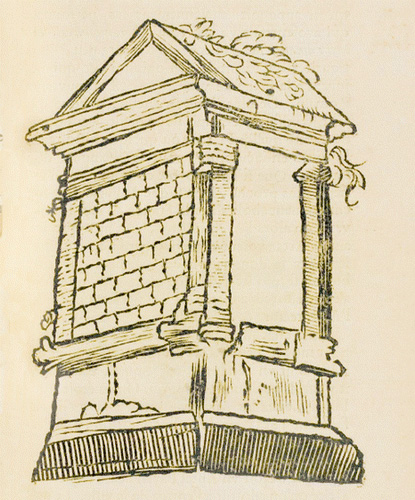
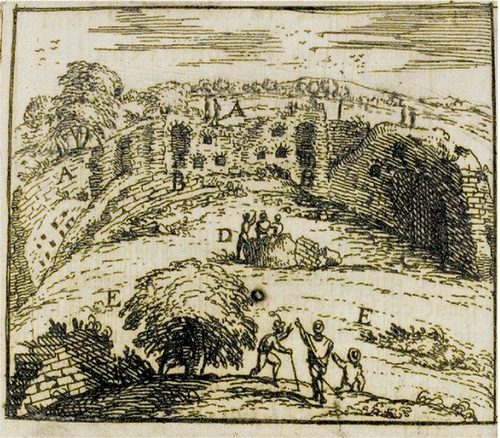
The aim of his adventurous voyage was to conduct research in the Orient in a manner as precise and factual as that which he had already undertaken in Lyon. Certainly Spon was driven by curiosity, but thanks to his medical training and Protestant culture he was also a methodical man who saw epigraphy and topographical description as tools for a systematic study of Antiquity. By collecting more than 2,000 inscriptions during a short stay of two years, Spon opened up a new era in Levantine travels, that of scholarly study which was no longer limited to the beauties of the landscape or the pleasures of collecting. The type of research that Spon conducted in the Orient resembled Aubrey’s research in England in that it gave objects the same epistemological status as texts:
Yet without imitating the passion of those who scorn all knowledge but that contained in books, let us content ourselves with having shown what is our own subject, and that there are fine things to be learned as much in inscriptions as in books. Or, if one must have only books, let us say that our antiques are nothing other than books, whose pages of stone and marble have been written with the blade and the chisel.6
Spon was an antiquary, yet he was the first to use the ancient Greek word archaiologia to define the search for the past. Thus he contributed to reframing humanist curiosity and laid the foundations for a systematic study of Antiquity (fig. 4).
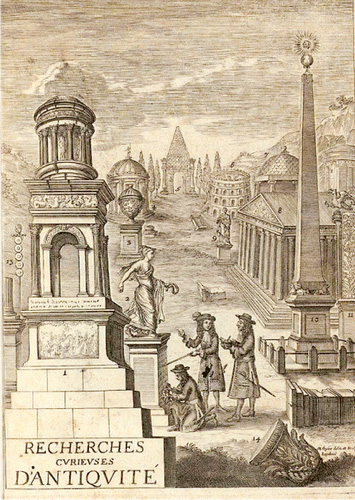
With Spon, the journey to the Orient became a journey of exploration of the past: turning his interest to the antiquities of the Orient, the physician who had applied his perspicacity to an exemplary study of vestiges in the city of Lyon now found a project whose scale matched his capabilities (fig. 5).
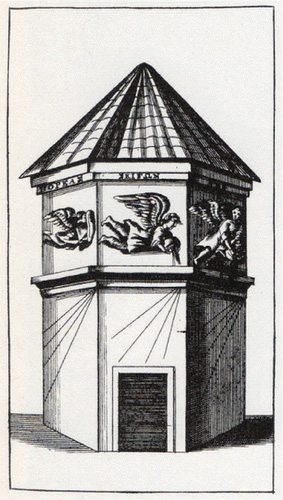
With this new perspective he helped to give specificity and autonomy to the research into antiquities in their broadest sense, and this kind of research became a component of French diplomatic missions to the Orient by the end of the seventeenth century. Recruits for such missions often came from far afield. Johann Michaël Wansleben was the son of a Lutheran pastor, born near Erfurt in Germany in 1635. He studied under the renowned orientalist Job Ludolf, worked in London, and traveled to Ethiopia on behalf of the Duke of Saxe-Gotha. In 1666, he became a Dominican and settled in Montpellier. In 1670, Jean-Baptiste Colbert sent him on a mission to the Orient that he described as follows in the instructions set down by Pierre de Carcavi:
He shall observe and describe as accurately as he can the palaces and principal buildings, ancient and modern, situate the places he passes through, and shall try to reestablish and draw the plans and profiles of those that have fallen into ruin; and if he cannot do this with all my buildings in their entirety, he shall do so at least for the principal parts…If he encounters among these ancient ruins statues or bas-reliefs that are by skilled artists he shall try to take them and give them over to these correspondents to be sent here. He shall collect together unknown inscriptions that he finds and try to copy them like diagrams and in the same language in which they are written, having them explained by an interpreter if he does not know the characters.7
Colbert did not take a merely utilitarian approach to Oriental journeys but saw them as a source of global knowledge touching on ancient and contemporary architecture. He envisaged an exhaustive collection of statues and reliefs and proposed making systematic copies of inscriptions in every language, and from all periods. The aim of these journeys was no longer to bring back a random collection of objects and impressions, but instead to establish a systematic, methodical description of everything that could be observed by the antiquary.
The idea of examining and comparing written and non-written sources was of course a fundamental asset for scholarly curiosity at the dawn of the eighteenth century. Jean Mabillon paved the way by demonstrating that the study of texts must begin with material analysis of the forms of writing, of papers, inks, seals. His disciple Bernard de Montfaucon deduced from this that history cannot restrict itself to written sources and must also search in monuments, statues, and ancient images for whatever may give a fuller understanding of Antiquity. Through the use of images, reproductions, and representations of monuments and works of art, Montfaucon wanted to construct a new form of history, to which he dedicated his massive Antiquité expliquée, published in ten volumes between 1719 and 1724 (fig. 6).
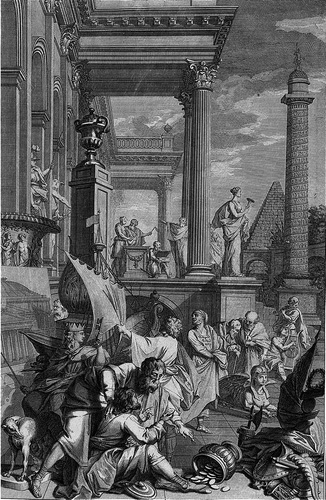
In a sense, Montfaucon was merely applying to Antiquity the idea of a “Paper Museum” that Cassiano dal Pozzo had created in the previous century. However rich the material the Benedictine scholar had gathered, he could hardly present anything more than a synthesis of the knowledge of his time. The expedition to the Orient of the two philologists François Sevin and Michel Fourmont in 1728–30 was planned with the approval of Montfaucon, now too old for such an undertaking himself. The mission was arranged by the Count of Maurepas, and the two scholar-abbés were sent to the house of the French ambassador in Constantinople, the Marquis de Villeneuve. Their ambition was to assemble a rich collection of books and manuscripts and to get access to what they thought were the treasures of the imperial library in Constantinople. These hopes were quickly dashed, but an archaeological journey that Fourmont undertook alone to Attica and the Peloponnese proved much more fruitful: it was in some respect a groundbreaking venture, for it combined topography, systematic recording of inscriptions, and in some cases even excavations.
Beneath the collector’s zeal, a different form of curiosity was starting to emerge, one that encompassed history, the way people lived—in short, what Spon called archaeology. Among the sponsors of this expedition was not only the royal librarian, the abbé Jean-Paul Bignon, but also the man who, after Montfaucon, would revolutionize the study of antiquities in the second half of the eighteenth century: Anne Claude Philippe, the Comte de Caylus. Where his predecessors had made do with a quick description and sometimes a superficial sketch of the works of Antiquity, Caylus’s innovation was to establish a systematic method of description, which permitted the attribution of a time and place to every object on the basis of its physical and stylistic characteristics. In the seven volumes of his Recueil d’antiquités (1752–67), Caylus, relying like Peiresc on an astonishing network of correspondents, local scholars, intendants, royal engineers, and diplomats, laid the foundations for a comparative study of Antiquity that tried to attribute a particular mode of production to each historical period. He thus prefigured the comparative typology of the next century by giving every kind of trace of the past, down to the most humble “rags and tatters,” its place in an orderly system of observation (fig. 7).
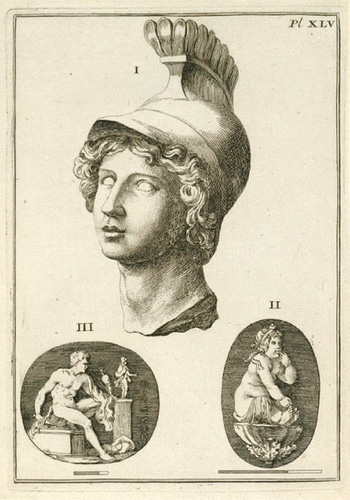
The history of technology and the identification of materials were now seen as integral parts of a new discipline that Buffon would propose as a model for the natural sciences. In his preface to L’antiquité dévoilée par ses usages by Nicolas-Antoine Boulanger, an engineer and therefore somebody from whom, according to Caylus, antiquarians had much to learn, Diderot—who for political and social reasons loathed Caylus—defended an approach to history that could build a bridge between natural and human history. According to Diderot, Boulanger “saw in our quarries the imprint of plants born on the coasts of India; saw the plough in our fields turn up creatures whose analoga are hidden in the ocean depths; saw men in the North sleeping on the bones of the elephant and men here walking on the home of whales; he saw the nourishment of this world growing on the surface of a hundred former worlds; he considered the order that the layers of the earth maintain.”8 The men of the Enlightenment, from Caylus to Diderot, shattered the descriptive framework of antiquarianism to observe nature and matter; with this they laid the ground for a new “positive science” that displaced and condensed the experience of their predecessors. This movement went hand in hand with rapid advances in the natural sciences, especially in paleontology and geology. It was linked to a thirst for scientific investigation that was creating a new model of collective work and affected virtually every discipline in the academic canon.
Military Expeditions and Positive Sciences
Napoleon Bonaparte’s expedition to Egypt in 1798 seemed like the incarnation of this knowledge revolution. This was a military campaign like none before, because along with the troops of his expeditionary force he brought a group of 160 scholars whose aim was to study Egypt’s past and present. It is notable that this body of scholars, though representing almost all the positive disciplines, did not include any antiquary in an official capacity but rather men of letters, architects, engineers, and naturalists. If half of the Description de l’Égypte (23 vols., 1809–28) is composed of contributions to the history of ancient Egypt, it is because, with the exception of a small, recalcitrant group who found it all “boring,” most of the scholars shared a passionate interest in the Egypt of the Pharaohs, the ruins of which towered over every bit of the landscape. This description of Egypt is thus the result of a global strategy of exploration that has made a clean break with antiquarian journeys from the previous era. It is a collective work that unites a group of scholars with a colonialist project supported by an expeditionary force.
The aim of Bonaparte and his friends at the Institut national des sciences et arts and the Muséum national d’histoire naturelle was to transform Egypt into a modern power on the European model, with a government, economy, and army suitable for making it a stable ally against the British fleet and the Turkish government. To achieve this, the French had to take control of the country: the first task of the scholars was to draw up a map of the territory and identify Egypt’s economic resources. But the Egypt of the time was also a historic land full of the ruins of an ancient civilization little understood by Europeans, and its monumental architecture made a great impression on them. Never before had so many topographers, engineers, and naturalists been confronted so suddenly and completely by an unknown landscape and nature. The expedition to Egypt had no need of an antiquary, for in the performance of his daily duties of topography, planning, and observation of flora and fauna, every scholar became an antiquary of a new type, who could use modern methodology to describe the country. Until then, such connoisseurs of Antiquity as Fourmont and Choiseul-Gouffier were guided by their desire to find new sites, collect objects, discover inscriptions; the expedition to Egypt marked a change of scale and method. It set a new objective: not the journey, the reconnaissance of a territory, but the systematic description of a whole body of natural and historical data. The antiquary was no longer a collector of objects, a lone explorer of unknown lands, but became an engineer, a topographer, and a geologist: the expedition to Egypt ushered in a multidisciplinary approach in which the past, understood as a component of the present, was one of the tools to help provide complete knowledge of a territory. It heralded a way of exploring land in all its different dimensions, which would soon mark the transformation of the old antiquarian discipline into a new science, archaeology. This shift not only changed the way Westerners saw Egypt, but had consequences for the way they looked at their own past: the need for cartographic research, for gathering information not just about objects but about their location in the earth, began to play its part.
The Morea expedition in 1829–31 resembled an extension of the one to Egypt, on a smaller scale but profiting from the previous experience (fig. 8).
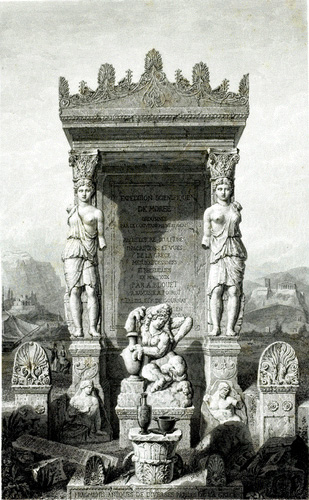
Drawn up on the basis of recommendations from the three national Academies (Sciences, Beaux-Arts, and Belles Lettres), the instructions sent to the different groups of scholars who accompanied the French expeditionary force to the Peloponnese give us some idea of the aims and the methods used. Of course, the context here was different; this was not a war of conquest but an expedition providing military support to the uprising of the Greek people as they tried to free themselves from the Ottoman yoke. The frontispiece of the first volume of publications from the accompanying scholars, L’expédition scientifique de Morée ordonnée par le gouvernement, bears the following dedication by Chateaubriand:
Woe to this century, passive witness to a heroic struggle, which would believe that the sacrifice of a nation can be allowed, without peril, and without considering the future. This fault, or rather this crime, must sooner or later be followed by the harshest of punishments.”9
French commitment to Greek independence (which was not unanimous) went hand in hand with exalting a methodical ideal embodied by the team of scholars and artists chosen to accompany the military expedition. Unlike the Egyptian venture, the Morea expedition focused on the study of Classical Antiquity. The scientific mission had three sections: natural history, archaeology, and architecture and sculpture. This division gives some idea of how much had already changed. But we still should not be misled by the new vocabulary: “archaeology” here does not mean what it does today, but rather describes the activity of classical philologists and historians of Antiquity responsible for historical geography and epigraphy, in contrast to the activity of the architects led by Abel Blouet, who had to prepare descriptions of the monuments. As Frank Lucarelli has convincingly shown, the members of the Morea expedition knew how to make good use of their predecessors’ work in Egypt.10 Exploration was organized systematically, guided by travelers’ accounts, ancient and modern, but also used the work of the topographers and cartographers who were drawing up a general cartography of Greece for the army. Fieldwork thus became an exercise in surveying, of which excavation was the extension: the excavations carried out in Olympia were the forerunners of projects in the second half of the century that would open a new era in scientific archaeology. In the volume devoted to natural history, Bory de Saint Vincent, the leader of the natural history section of the mission, expressed this new topographical understanding of the landscape that is at the heart of archaeology:
Not one spring, stream, ruin, or even stone will be cited in my two volumes, even if they have some characteristic worthy of remark, without being indicated in a topographical representation meant to guide those who want to accompany me there, following the same paths. One should read a truthful account with a map under one’s eyes.11
The Morea expedition marks a profound transformation of the manner in which the material traces of the past are conceived and investigated. It heralds a new era in which the methods of the natural sciences and the humanities will be brought together. In 1828, Christian Charles Josias von Bunsen created the Istituto di corrispondenza archeologica in Rome, the first model of our modern archaeological institutes; in 1830 Bror Emil Hildebrandt applied Christian Jürgensen Thomsen’s three-age system of chronology to the archaeological collections in the Historical Museum at Lund University in Sweden; and in that same year Charles Lyell published the first volume of his Principles of Geology. A new discipline was taking its place in the chorus of knowledge, establishing a bridge between human history and natural history, local history and universal history, collecting objects and surveying the land. Archaeology in the modern sense of the term is the consequence of this paradigm shift that united in a single field of knowledge practices until then divided by tradition, habit, and prejudice.
Alain Schnapp is professor of Greek archaeology at the University of Paris 1 (Panthéon-Sorbonne). In 1999, he was the founding director of the Institut national d’histoire de l’art (INHA), the premier research center for art history in France. He has held many visiting professorships, including those at the universities of Princeton, Naples, Cambridge, and Heidelberg. The history of archaeology is one of his primary interests, on which he has published widely, including La conquête du passé: Aux origines de l’archéologie (Paris: Éditions Carré, 1993), which was translated into English as The Discovery of the Past (London: British Museum Press, 1994).
- 1. José Garanger, Archéologie des Nouvelles-Hébrides, contribution à la connaissance des îles du Centre (Paris: Société des Océanistes, 1972).
- 2. Quoted in Michael Hunter, John Aubrey and the Realm of Learning (London: Duckworth, 1975), 181.
- 3. Philippe Tamizey de Larroque, Lettres de Peiresc aux frères Dupuy, tome II, janvier 1629–décembre 1633, lettre XXII (Paris: Imprimerie Nationale, 1890), 107.
- 4. Henri Omont, Missions archéologiques françaises en Orient aux XVIIe et XVIIIe siècles (Paris: Imprimerie Nationale, 1902), XI.
- 5. Lettre du 10 décembre 1673, Munich, Bayerische Staatsbibliothek, cod. Gall 643 p. 120, quoted in François Moureau, Le théâtre des voyages: Une scénographie de l’âge classique (Paris: Imago Mundi, 2005), 247–48.
- 6. Jacob Spon, Recherche des antiquités et curiosités de la ville de Lyon (Lyon: Faeton, 1673), introduction.
- 7. Omont, Missions, 60.
- 8. “Precis sur la vie et les ouvrages de Boullanger,” Oeuvres de Boullanger [sic], tome 1 (Amsterdam, 1794), 5.
- 9. François René de Châteaubriand, Oeuvres complètes, tome V, Itinéraire de Paris à Jerusalem (Paris: V. Lecou, 1840), 2.
- 10. Frank Lucarelli, “Les modes de prospection des architectes et des archéologues de l’expédition de Morée,” in Mani: Témoignages sur l’espace et la société. Voyageurs et expéditions scientifiques, XVe–XIXe siècles, ed. Yannis Saïtas (Athens: IRN/FNRS, 1996), 503–40.
- 11. Abel Blouet, Expédition scientifique de Morée, section des sciences physiques, tome I (Paris: F. G. Levrault, 1836), 3.
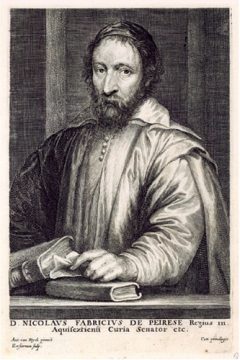
Fig. 1. Lucas Vorsterman I, after Anthony van Dyck, Portrait of Nicolas-Claude Fabri de Peiresc, ca. 1646, engraving, 24.4 × 16 cm. British Museum, London.
